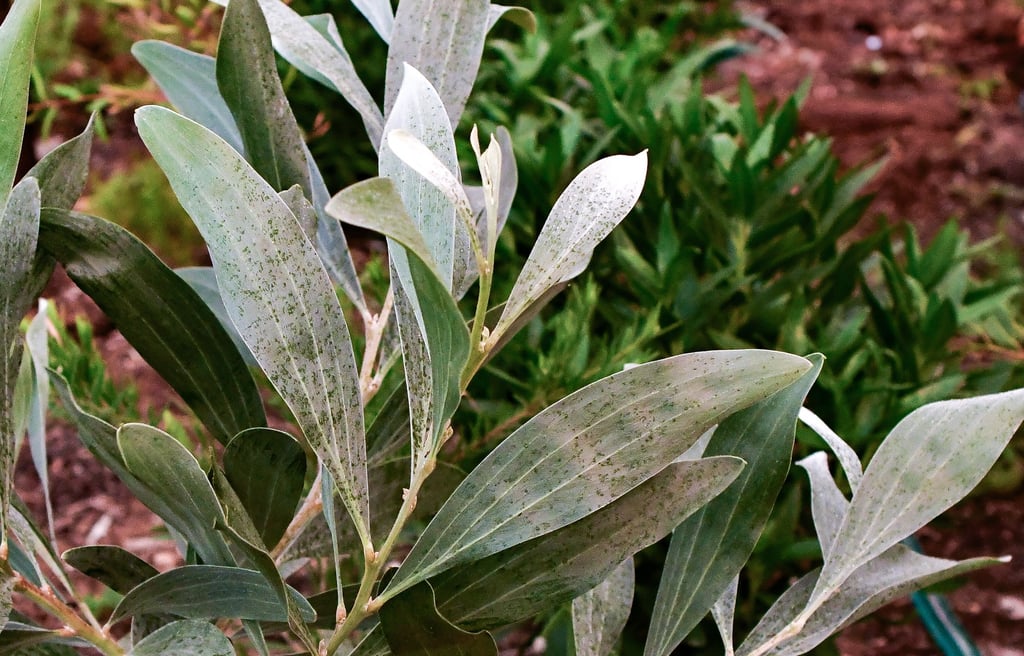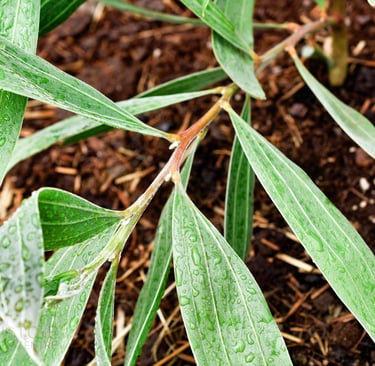The Stunning Acacia holosericea: Nature’s Silky Wattle


Acacia holosericea, commonly known as the Silky Wattle, is a striking member of the Acacia genus, celebrated for its soft, silver-grey foliage, rapid growth, and resilience in harsh environments. This tree holds a special place in Australia’s flora, offering beauty, ecological benefits, and practicality in equal measure.
Origins and Natural Habitat
Native to northern Australia, Acacia holosericea thrives in regions characterised by seasonal rainfall, warm temperatures, and well-draining soils. It is often found growing along creek beds, in open woodlands, and on sandy or rocky terrains. This natural habitat has shaped the Silky Wattle into a hardy species capable of withstanding drought, poor soils, and intense heat—traits that make it a favourite among gardeners in arid and semi-arid regions.
A Distinctive Appearance
What sets Acacia holosericea apart is its distinctive phyllodes, which are leaf-like structures that replace traditional leaves. These phyllodes are broad, curved, and covered with fine, silky hairs that give the plant its "silky" appearance. Their silver-grey hue reflects sunlight, helping the tree conserve water and stay cool in hot climates.
In late winter to early spring, the Silky Wattle produces bright golden-yellow flower spikes, which add a splash of vibrant colour to its silvery canopy. These flowers are a magnet for pollinators, including native bees, butterflies, and birds, making the tree a valuable addition to wildlife-friendly gardens.
Growth and Landscaping Uses
Acacia holosericea is a fast-growing species, capable of reaching 3–10 metres in height within just a few years. This rapid growth makes it an ideal choice for:
Windbreaks: Its dense foliage helps reduce wind erosion and provides shelter for smaller plants.
Soil Stabilisation: The tree’s robust root system binds soil, making it useful for controlling erosion on slopes and degraded landscapes.
Revegetation Projects: It thrives in nutrient-poor soils and can be planted in areas where other species struggle to establish.
Additionally, its striking appearance and manageable size make it an excellent feature tree or backdrop in xeriscaping (low-water landscaping).
Benefits Beyond Aesthetics
1. Ecological Contributions
Like many Acacias, A. holosericea is a nitrogen-fixing plant, meaning it forms a symbiotic relationship with soil bacteria to convert atmospheric nitrogen into a form plants can use. This improves soil fertility and supports the growth of neighbouring plants.
2. Cultural Significance
For Indigenous Australians, Acacia holosericea has long been a source of food and medicine. The seeds are high in protein and can be ground into flour, while various parts of the tree have been used in traditional remedies.
3. Wildlife Habitat
The Silky Wattle provides food and shelter for a variety of wildlife, from insects to birds. Its seeds attract parrots, while its dense canopy offers nesting sites for smaller species.
Growing Acacia holosericea
For gardeners eager to add Acacia holosericea to their landscape, here are some key tips:
1. Soil and Location
Prefers well-draining soil, such as sandy or gravelly substrates.
Tolerates mildly alkaline to slightly acidic soils.
Thrives in full sun but can adapt to light shade.
2. Watering and Maintenance
Requires minimal watering once established, making it perfect for drought-prone areas.
Benefits from occasional deep watering during extended dry spells.
Prune lightly after flowering to maintain its shape and encourage healthy growth.
3. Propagation
Best propagated from seed.
Soak seeds in hot water overnight to break dormancy before planting.
Germination occurs quickly, usually within 1–2 weeks.
4. Pests and Diseases
Relatively pest-free but may occasionally attract scale insects or caterpillars.
Ensure good air circulation to prevent fungal issues.
Challenges and Considerations
While Acacia holosericea offers many benefits, it can become weedy in some environments, especially where conditions mimic its native habitat. Regular monitoring and responsible planting practices are essential to ensure it does not outcompete local flora.
Why Choose Acacia holosericea?
For gardeners in semi-arid or tropical climates, Acacia holosericea is a standout choice. Its unique appearance, fast growth, and ability to thrive in challenging conditions make it a versatile addition to gardens, farms, and restoration projects. Beyond its aesthetic appeal, the Silky Wattle enriches soil, supports biodiversity, and demonstrates the beauty and resilience of Australian native plants.
Whether you're seeking a tree to transform degraded land, a feature plant with silvery foliage, or a haven for wildlife, Acacia holosericea delivers in every way.
Looking for Acacia holosericea to add to your garden? Visit Ironstone Garden Centre for expert advice on planting and care!


